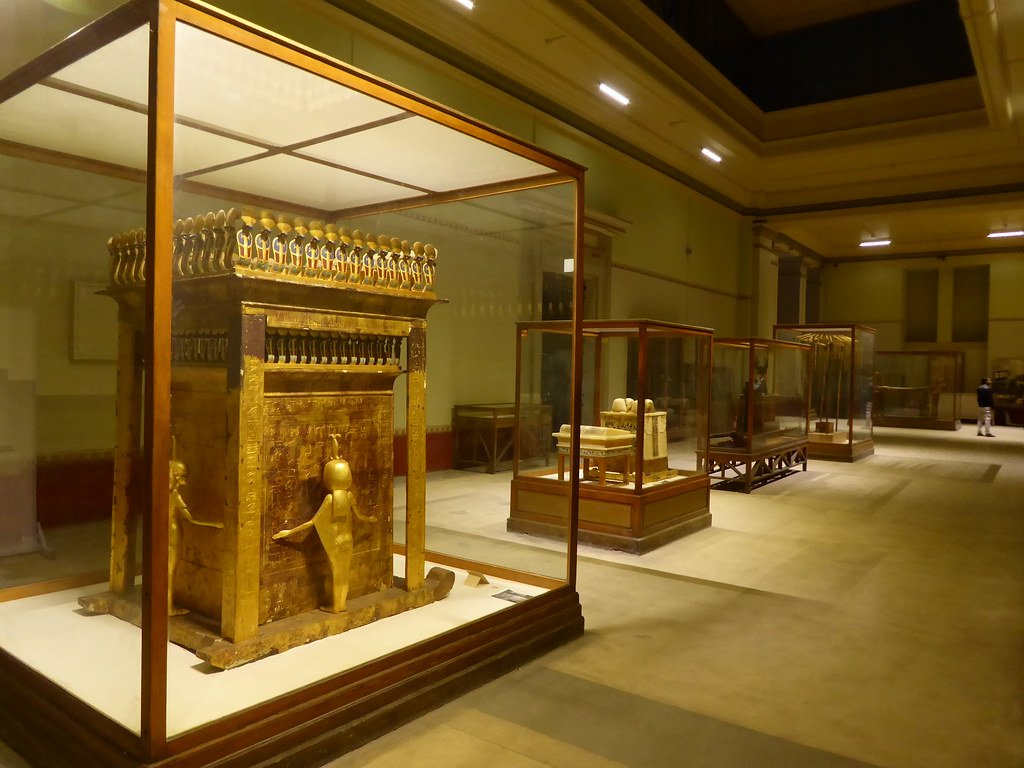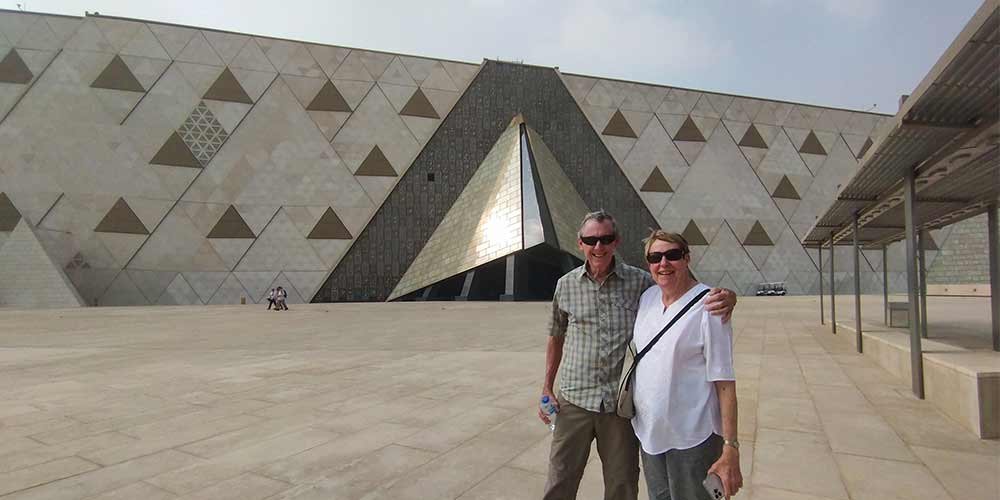Amazing Egyptian Museums: A Time Capsule of Grandeur.
A Journey Through Time: The Treasures of the Egyptian Museum
In the heart of Cairo, one of the world’s most bustling metropolises, lies an impressive repository of ancient history – The Egyptian Museum. This monumental structure, also known as the Museum of Egyptian Antiquities, houses the world’s most extensive collection of Pharaonic antiquities, presenting an unparalleled opportunity to step back in time and delve into Egypt’s rich past.
The Museum’s Origins
The Egyptian Museum was first established in 1858 by French archaeologist Auguste Mariette and was originally housed in a small building in Boulaq. After surviving several relocations due to threats such as Nile flooding and a fire incident, the museum found its permanent abode in Tahrir Square in 1902. Designed in the Neoclassical style by French architect Marcel Dourgnon, the two-story building is almost as historic as the treasures it holds.

An Unmatched Collection
The Egyptian Museum boasts an astounding collection of over 120,000 items, offering visitors a comprehensive view of Egypt’s ancient history, which extends over 5,000 years. The exhibits span from the earliest Predynastic Period to the Greco-Roman era, covering all the essential sites and periods of Ancient Egypt.
The Tutankhamun Galleries
Among the museum’s significant attractions are the Tutankhamun galleries. Discovered by archaeologist Howard Carter in 1922, the tomb of the young Pharaoh Tutankhamun revealed a treasure trove of exquisite artifacts untouched by time or tomb raiders. The museum houses over 5,000 objects from this tomb alone, including Tutankhamun’s death mask, one of the most beautiful and iconic pieces of art from ancient Egypt. Made of solid gold and inlaid with semi-precious stones, the mask radiates the young king’s eternal beauty.

Royal Mummy Room
Another highlight of the museum is the Royal Mummy Room, which contains the mummified remains of many great Egyptian pharaohs. Notable amongst these are the mummies of Hatshepsut, Seti I, and Ramses II, who ruled Egypt for 66 years. These mummies offer an insightful and somewhat eerie glimpse into ancient Egyptian death practices and beliefs about the afterlife.

Statues and Stelae
The museum also exhibits an impressive collection of statues, highlighting the artistic evolution through different dynasties. The colossal statue of Pharaoh Amenhotep III and his wife Tiye, carved from a single piece of black granite, is a visitor’s favorite. Other striking exhibits include the stelae – stone or wooden slabs erected as monuments, often for funerary or commemorative purposes. These stelae feature carvings and hieroglyphic inscriptions that provide crucial information about ancient Egyptian culture, religion, and everyday life.
The Amarna Collection
The Amarna Collection displays artifacts from the brief period in Egyptian history when Pharaoh Akhenaten moved the capital to Amarna and introduced the worship of a single god, Aten. This period is well-known for its unique artistic style, and the collection includes several beautiful depictions of Akhenaten, his famous queen Nefertiti, and their children.

Preserving History
The Egyptian Museum plays an invaluable role in preserving and showcasing Egypt’s rich heritage. It’s not just a museum; it’s a time capsule that takes its visitors on a journey through an extraordinary civilization’s epochs. The museum’s vast collection represents various aspects of ancient Egyptian life, including their religious practices, societal structures, artistic sensibilities, and remarkable knowledge of mummification and preservation.
In conclusion, the Egyptian Museum in Cairo is more than just a building housing historical artifacts. It is an essential key to understanding the rich tapestry of Egyptian history, culture, and civilization. From the colossal statues that guard its entrance to the smallest trinkets in its glass cases, every object tells a story of a civilization that once was, whispering tales of power, faith, artistry, and wisdom.
The New Grand Egyptian Museum
While the Egyptian Museum in Tahrir continues to hold an important place, a large portion of its collection is being moved to the Grand Egyptian Museum (GEM) in Giza, near the Pyramids. The GEM, upon its completion, will be the largest archaeological museum in the world, housing a comprehensive collection of ancient Egyptian artifacts, including the full Tutankhamun collection, displayed together for the first time.

A Gateway to Ancient Egypt
For history enthusiasts, art lovers, and casual tourists alike, the Egyptian Museum offers an immersive experience into the heart of ancient Egypt. Its vast collection and the stories it encapsulates make it one of the world’s greatest museums. Whether you are marveling at the golden mask of Tutankhamun, reflecting on the mummified remains of the pharaohs, or trying to decipher the stories told on ancient stelae, a visit to the museum is a journey into the depths of time.
Whether it’s your first visit or your hundredth, the Egyptian Museum promises to captivate and inspire, holding up a mirror to a civilization that, thousands of years after its demise, continues to influence and fascinate us. It stands as a testament to Egypt’s enduring allure, its extraordinary history etched in every artifact, waiting to be discovered, studied, and appreciated.
Explore Egypt Tours Tripadvisor


Comment (0)